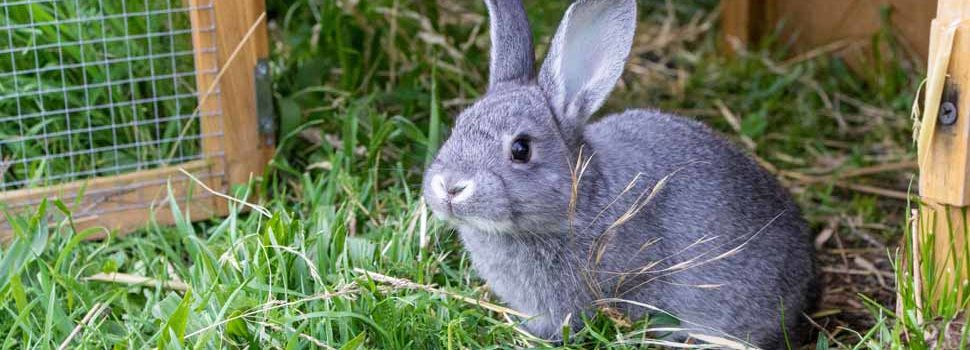
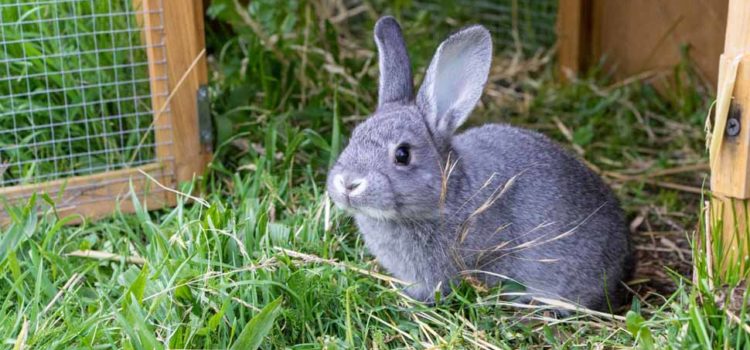
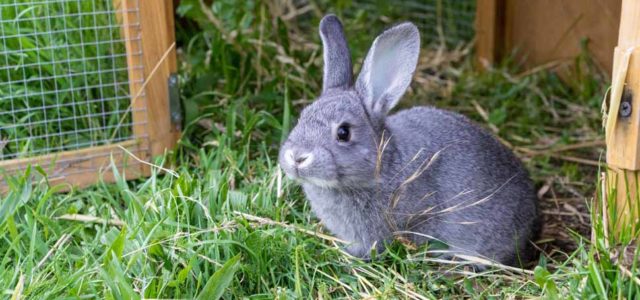
Rabbits need mental stimulation to prevent boredom and unhappiness. They have an urge to explore, play and be outside. Which is something, as a rabbit owner, you shouldn’t discourage.
However, rabbits aren’t always as well understood as their feline or canine counterparts. As a result, it isn’t always obvious how to keep your rabbit entertained. And, whilst every rabbit is different, in this guide you’ll find some of the most common tricks rabbit owners use to make sure their bunnies never get bored.
Remember to try several of these tips and if one doesn’t work. Keep trying until you find something that clicks with your bunny.
Rabbit Tunnels
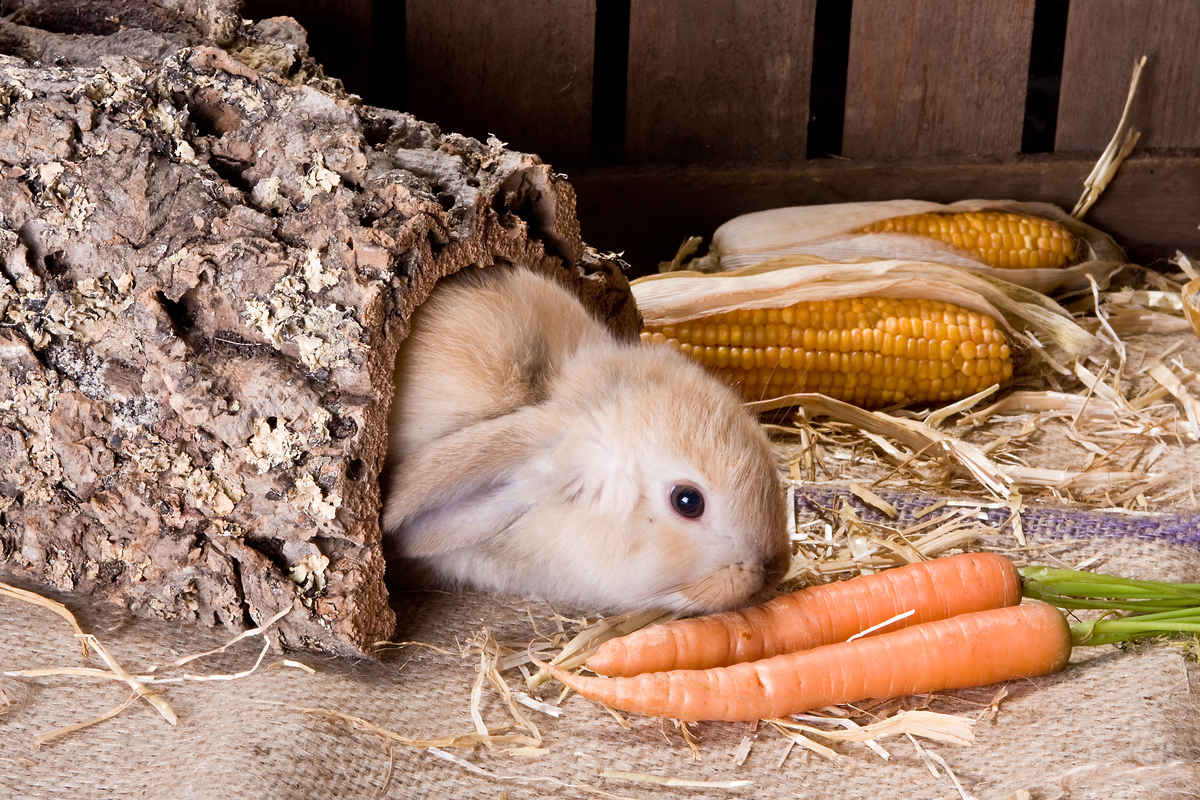
Just like their wild cousins, your domestic rabbit will enjoy running through tunnels because it mimics the structure of rabbit warrens. It also provides interest and somewhere for your rabbit to seek refuge if it feels threatened.
Rabbit tunnels are available to buy or you can make your own. Bought rabbit tunnels are available in two main kinds: plastic and wood.
1 Plastic Tunnels
Plastic tunnels are typically the cheapest and can often be shaped into curves or s-bends. They are also long-lasting and won’t be damaged if left outside during the winter. Tunnels such as those made by Snugglesafe can be connected together using a central plastic box to make more interesting structures for your rabbit to play inside.
The only real problem with plastic tunnels is if your rabbit decides to eat them. The consumption of plastic can cause impaction (a digestive blockage which can be fatal). So, if you opt for plastic tunnels keep an eye on your rabbit to make sure it is not eating large quantities of plastic.
2 Wooden Tunnels
Wooden tunnels (also known as a bridge) do not suffer from this drawback since they are made from natural materials.
Wooden tunnels are very durable but are more expensive than there plastic counterparts. They are very sturdy and provide a stable surface for your rabbit to climb on or over without rolling or slipping. You can still buy several tunnels and place them together to make interesting layouts for your rabbit. However, they do not ‘clip’ together the same way plastic tunnels do.
3 Homemade Tunnels
Lastly, is the homemade tunnel. This can be as simple as a cardboard box with a hole cut in either end. The downside to these is that they obviously won’t last long. But, they are cheap and easy to make and something you could do today. This leads us to our next tip…
Cardboard Boxes
Its almost as if cardboard boxes were designed with the rabbit in mind. They provide a place for your rabbit to hide, they can be used as tunnels and you can even join several together to make a small cardboard-warren for your rabbit. Rabbits even like to nibble them to make their own entranceways and exits. In general, they provide hours of entertainment for your rabbit.
Always remember to cut two holes in the boxes. Rabbits are prey animals and don’t like the feeling of being trapped. From your rabbit’s viewpoint having two exits allows it to make a quick escape should a predator enter through one of the holes. So, if your rabbit is refusing to venture into a cardboard box this could be why.
Dig Pits
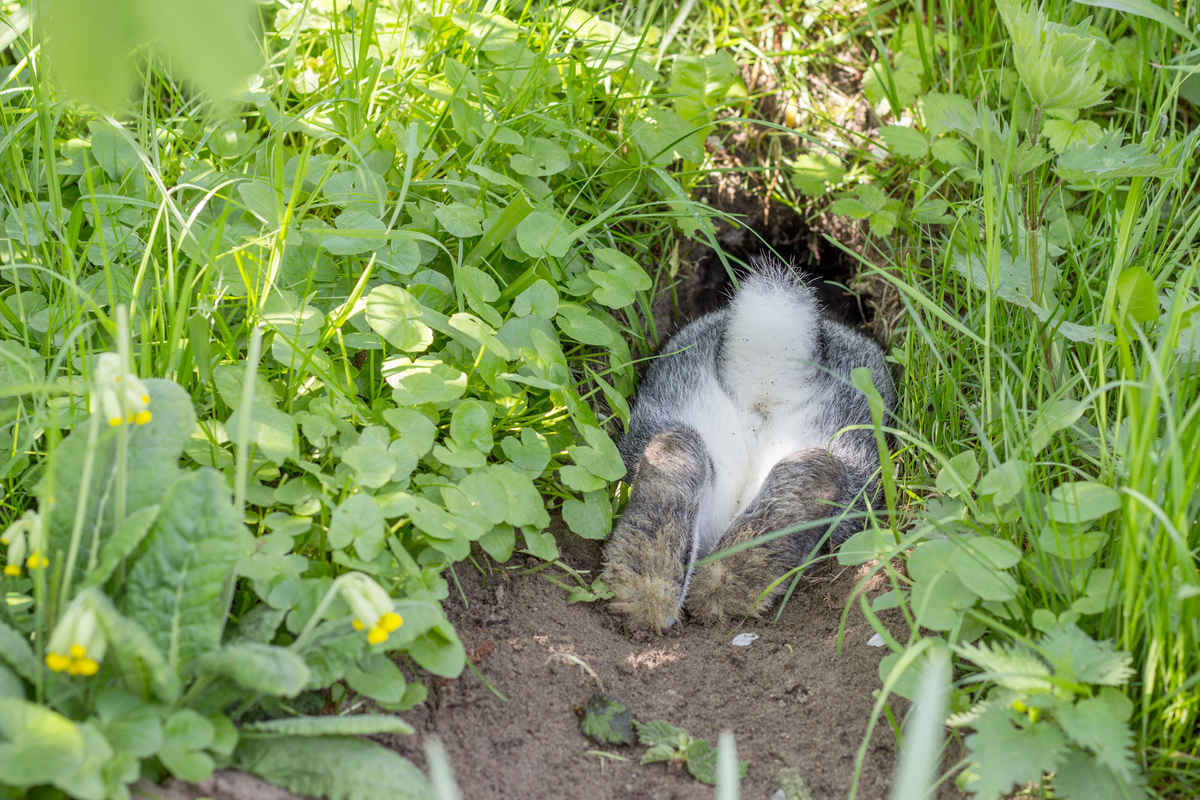
Rabbits have an instinct to dig
Rabbits have a natural urge to dig. In the wild, they dig to create burrows for protection and to provide a safe home to rear their young. And this instinct is not lost in domestic bunnies.
However, it’s not always possible to place your rabbit on a grassy patch to dig. Sometimes your rabbit will dig out or you might be worried a predator could dig in! In such situations, opting to place your rabbit hard surface such as a patio seems the safer choice.
But this doesn’t mean your rabbit can’t dig. Filling a large litter tray with sand or soil provides the perfect dig pit for your rabbit. If you’re even modestly DIY savvy you could also create a wooden frame and use this place of a litter tray. The advantage here is that you can make much larger dig pits for much less than the cost of buying several litter trays.
Cardboard Rolls And Tubes
Save your old kitchen and toilet roll tubes for your rabbit. They make great items for your bunny to pick up and throw. You could even stuff the rolls with straw to give your rabbit an entertaining treat it has the work to get.
Straw And Hay
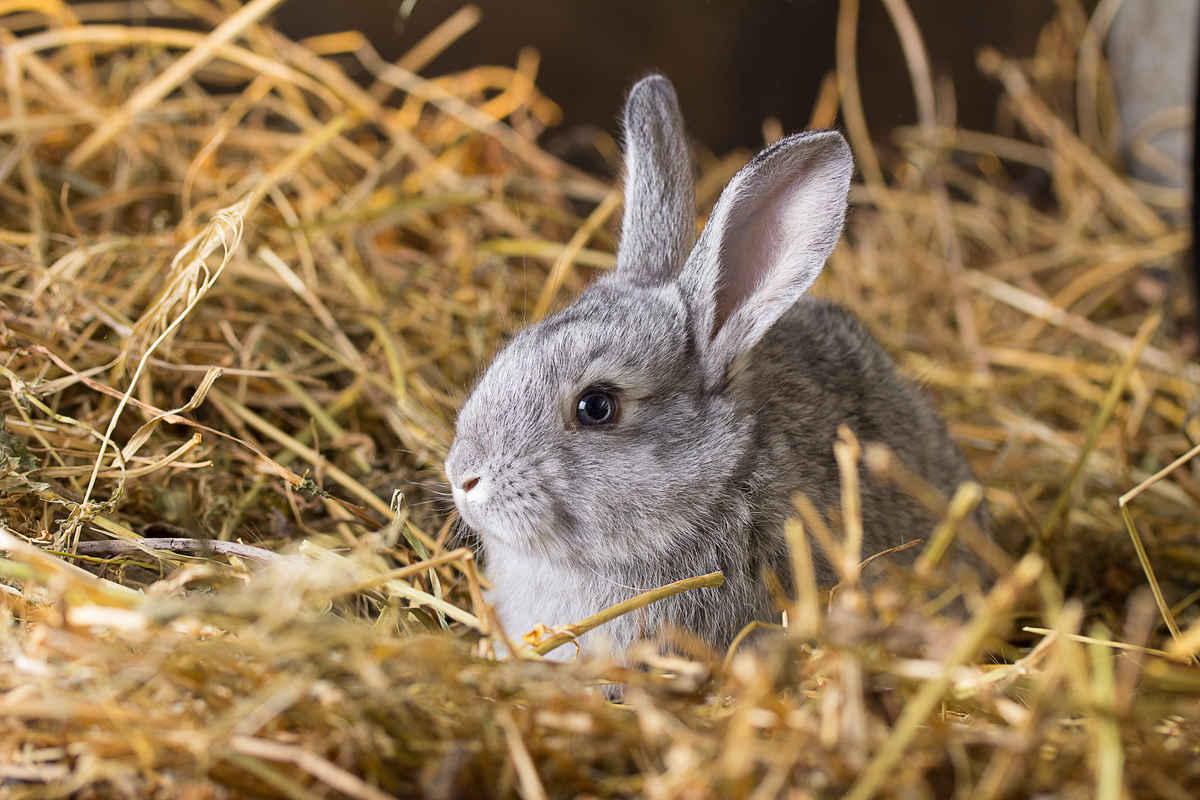
Rabbits are foragers and will spend a lot of their day nibbling food. Hay not only helps keep their teeth from growing too long but the act of foraging and nibbling helps keep your rabbit entertained.
You can even mix in treats such as small bits of carrot or alfalfa to pique your rabbit’s interest. This will encourage scrabbling and digging into the hay and provide another source of entertainment. Just remember to limit the number of treats you feed your rabbit each day.
Plant Pots
This unusual suggestion has worked well for us during the 10 years we’ve kept rabbits. However, larger terracotta plant pots (of 15 – 20cm in diameter) make great play items for rabbits.
Filled with earth they can be left upright for your rabbit to use as a lookout post or to scrabble in. Alternatively, they can be turned on their side to make a unique dig pit. You can even use one to place your rabbit’s hay inside to keep it from blowing around the run. Plus they have the added advantage of being made from a natural material that your rabbit won’t nibble. As such, they should last for a long time and not present the possible problems associated with plastic rabbit toys.
Always make sure the plant pots filled with earth cannot easily roll around and they are wedged firmly in the corner of the run or secured in place using bricks or large stones.
Rabbit Safe Nibbles
Try hiding a few treats around your rabbits run for it find. You can even bury a few treats your rabbit’s dig pit or place them inside tunnels. These unexpected surprises will encourage your rabbit to snuffle around to find more.
Shake Things Up!
Keeps things interesting for your rabbit by creating new layouts with the boxes and tunnels in its run. You could change things up on a weekly basis.
Exercise And Room To Run
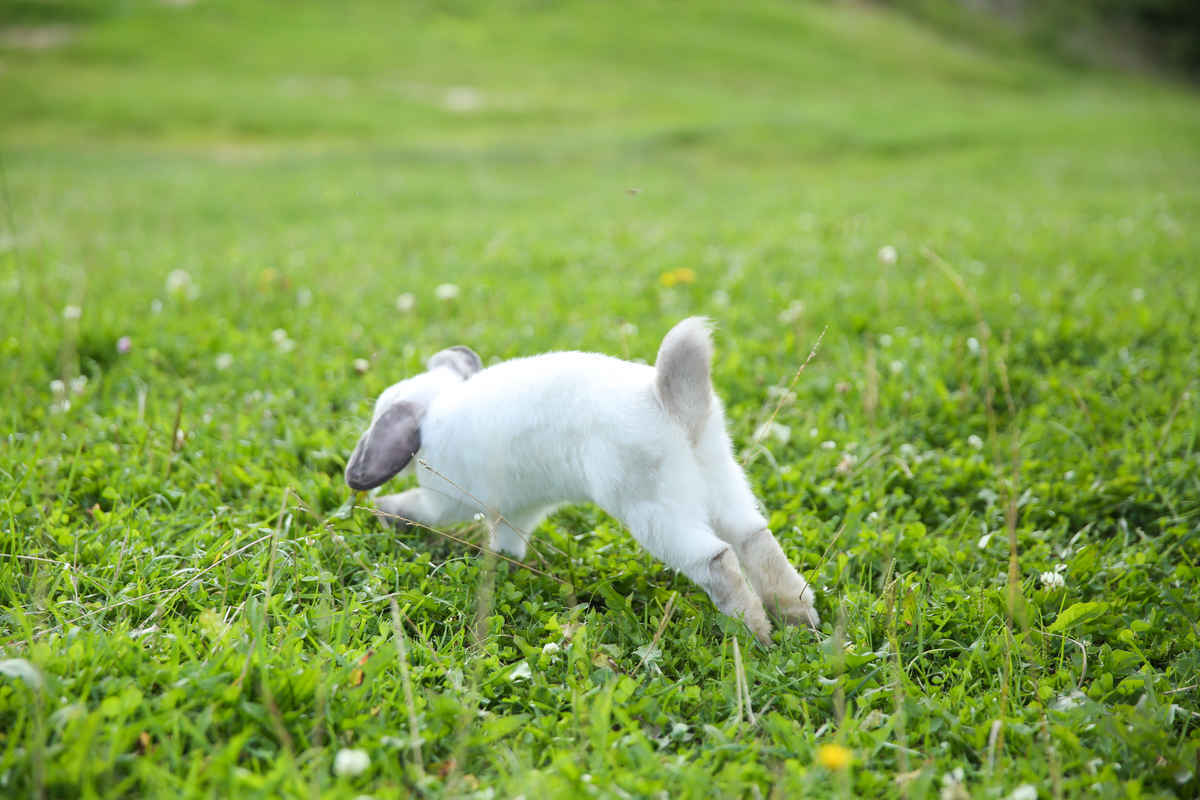
Toys and treats will keep your rabbit entertained for a while but they need to get outside to exercise and stretch their legs. This is why many of the ideas in this guide have been centered around ideas that focus on making your rabbits run a fun place for it to be.
If you currently don’t own a run for your rabbit or own a run and hutch combo we recommend buying as large a run for your rabbit as you can. We’d recommend a run at least 1.5m x 1.5m in size, but buy as large a one as you can.
How Can I Tell If My Rabbit Isn’t Bored?
This is the most rewarding part. Happy bunnies dig, scrabble, explore and run. Plus, if you’re really lucky you’ll see your rabbit hop and shake its head in contentment (this is known as binkying). Your rabbit won’t exhibit these behaviors all the time but as you bond with your bunny you’ll see them and its a sure sign your rabbit is having a good life.





